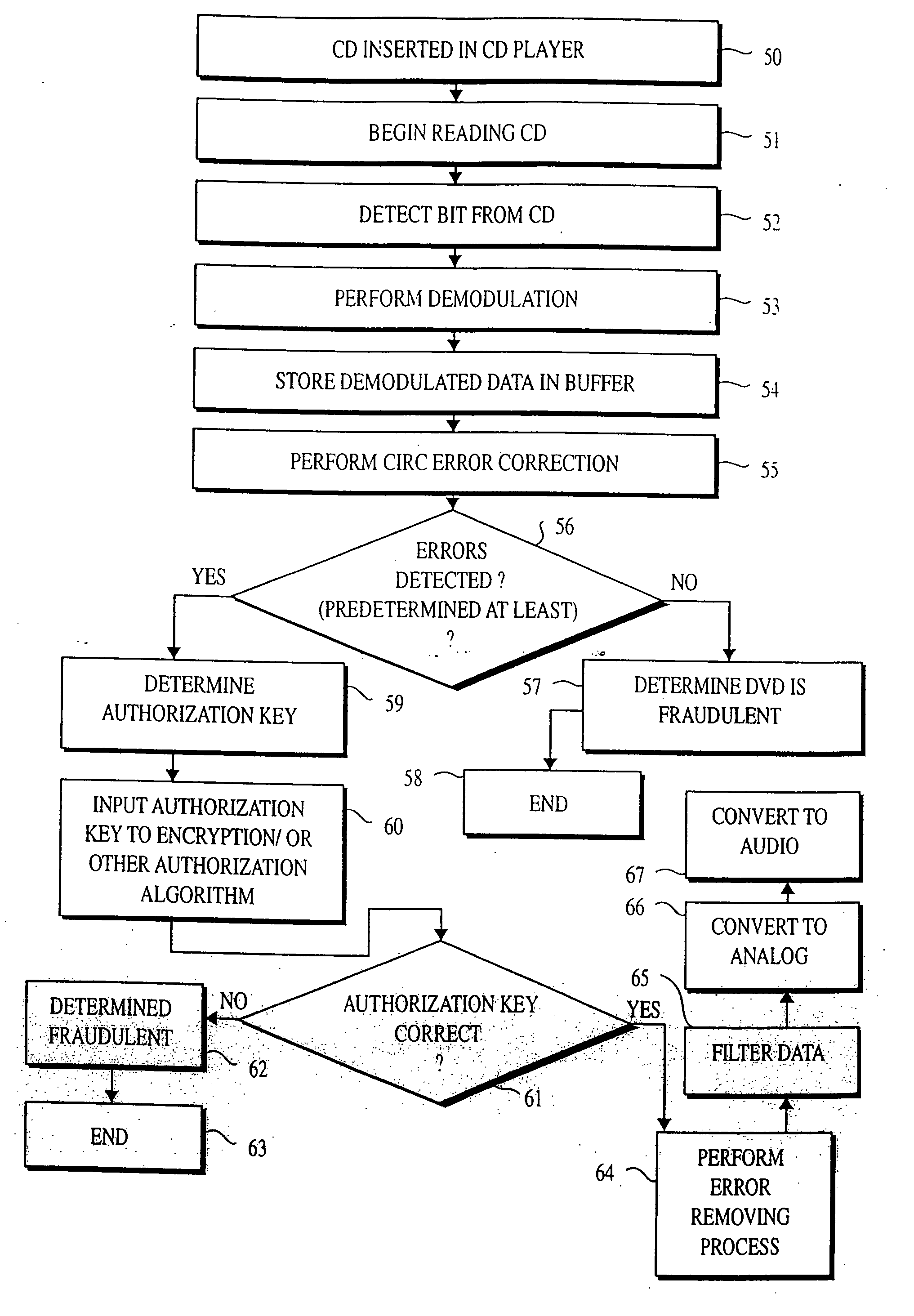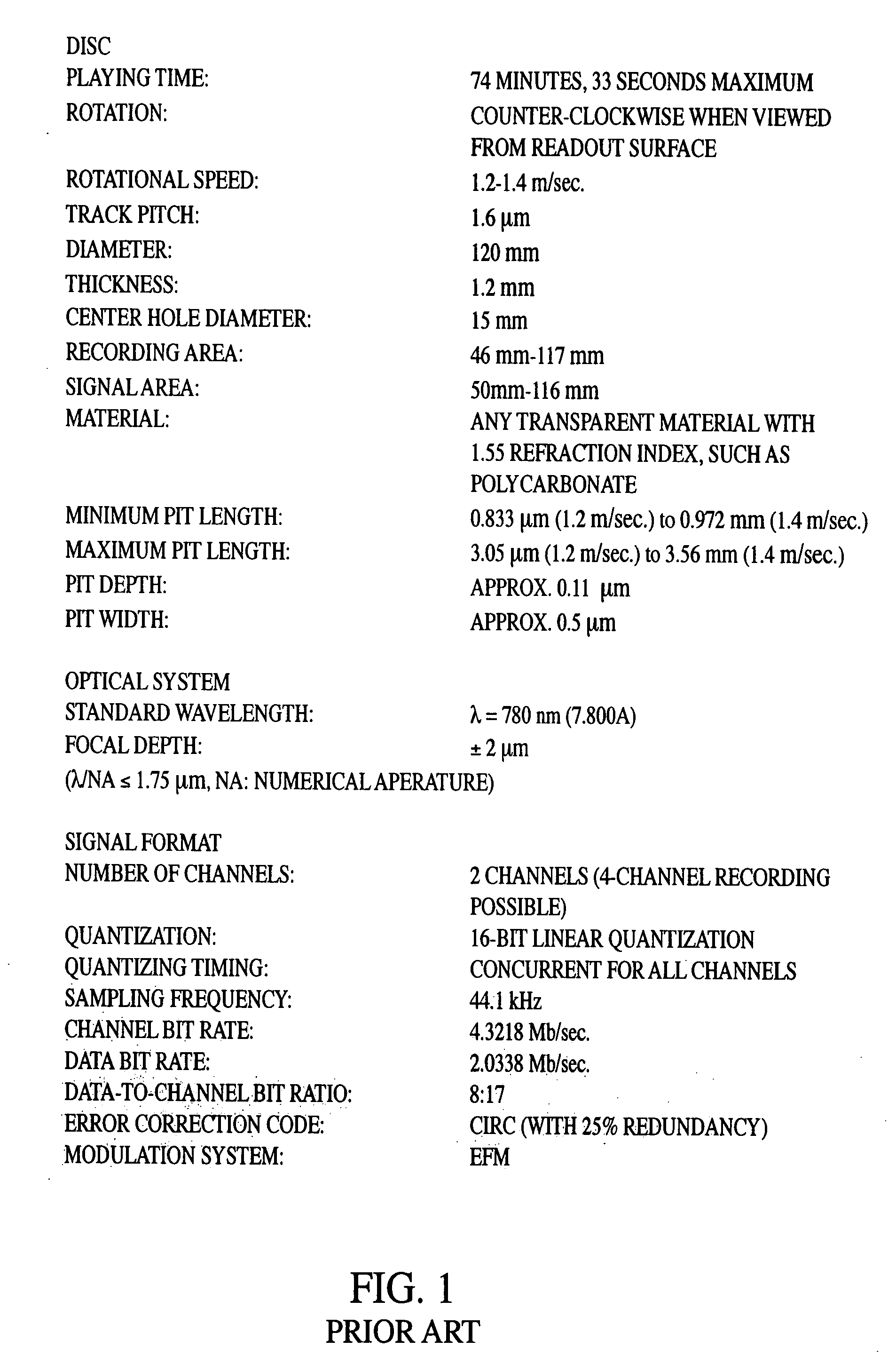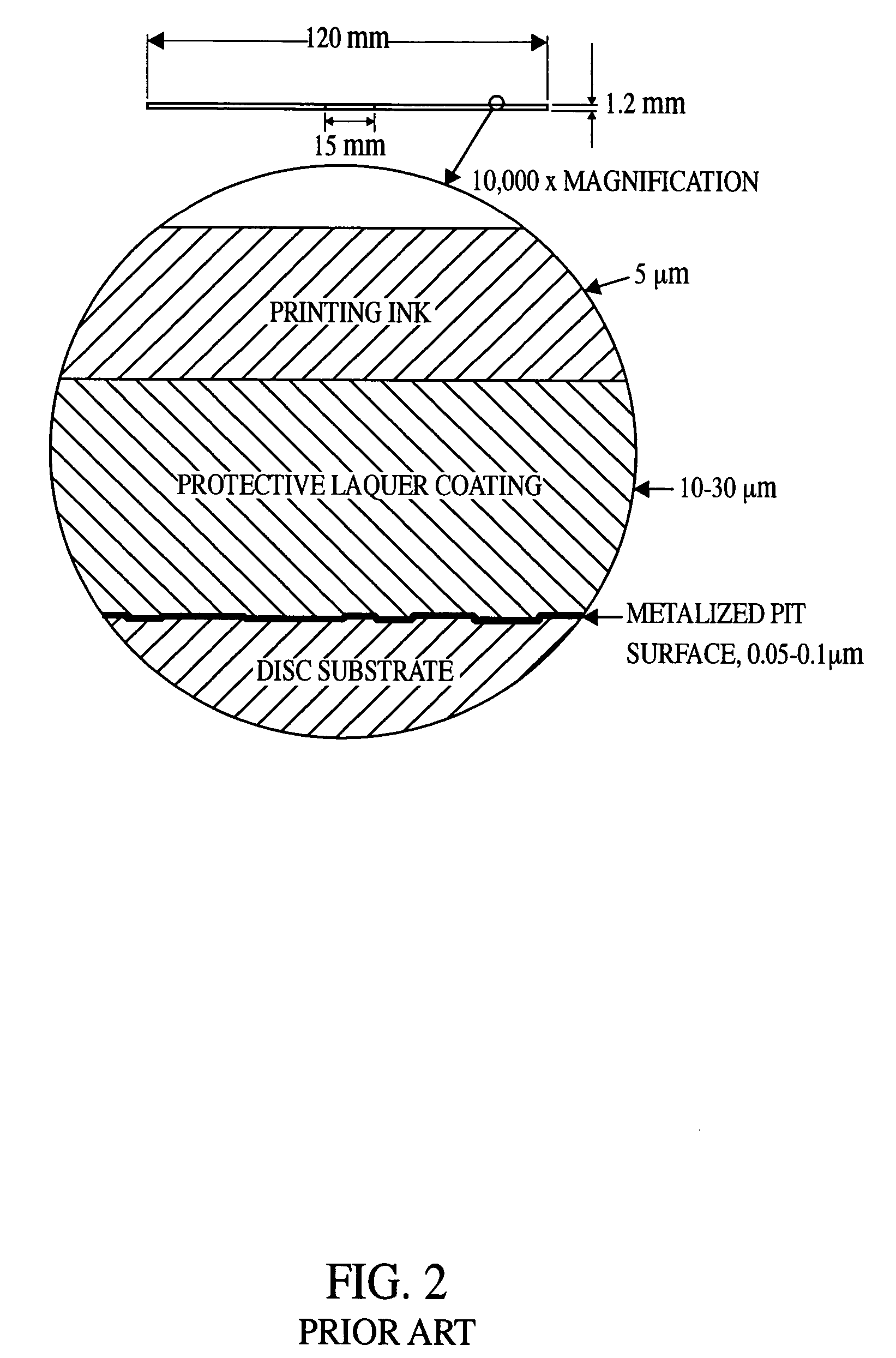Method for minimizing pirating and/or unauthorized copying and/or unauthorized access of/to data on/from data media including compact discs and digital versatile discs, and system and data media for same
a data media and anti-piration technology, applied in the field of anti-piration technology, can solve the problems of reducing the playing time of the cd, reducing the data density, and reducing the outer diameter of the cd, so as to minimize the piracy of, or unauthorized access, and minimize the effect of pirating
- Summary
- Abstract
- Description
- Claims
- Application Information
AI Technical Summary
Benefits of technology
Problems solved by technology
Method used
Image
Examples
Embodiment Construction
[0167] The present invention relates to a method / system of preventing unauthorized copying of data on data media, including CDs and DVDs. Generally, an authorized CD is designed to require decoding by an authorized disc player. The authorized CD includes certain information used by an authorized CD player for playing music. An unauthorized copied, formed or pressed CD, however, does not have the requisite encryption / decryption key(s) necessary for decoding.
[0168] Consequently, a feature and advantage of present invention is to prevent piracy of audio and / or video data from discs; that is, to provide greatly enhanced security measures against CD pirating. The present invention is based, in part, on my discovery that the authorization key(s) need not necessarily be transferred in the audio using conventional hardware and / or software in CD or DVD players that may be adapted in one or more ways described below.
[0169] In the present invention, predetermined errors are intentionally emb...
PUM
| Property | Measurement | Unit |
|---|---|---|
| diameter | aaaaa | aaaaa |
| diameter | aaaaa | aaaaa |
| diameter | aaaaa | aaaaa |
Abstract
Description
Claims
Application Information
 Login to View More
Login to View More - R&D
- Intellectual Property
- Life Sciences
- Materials
- Tech Scout
- Unparalleled Data Quality
- Higher Quality Content
- 60% Fewer Hallucinations
Browse by: Latest US Patents, China's latest patents, Technical Efficacy Thesaurus, Application Domain, Technology Topic, Popular Technical Reports.
© 2025 PatSnap. All rights reserved.Legal|Privacy policy|Modern Slavery Act Transparency Statement|Sitemap|About US| Contact US: help@patsnap.com



